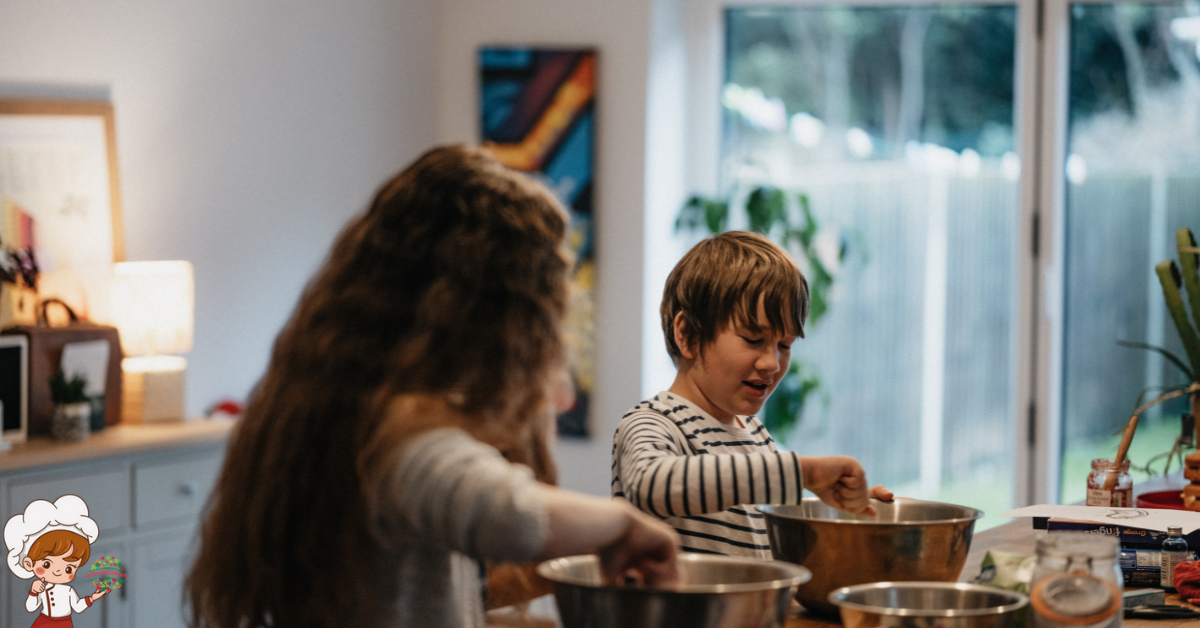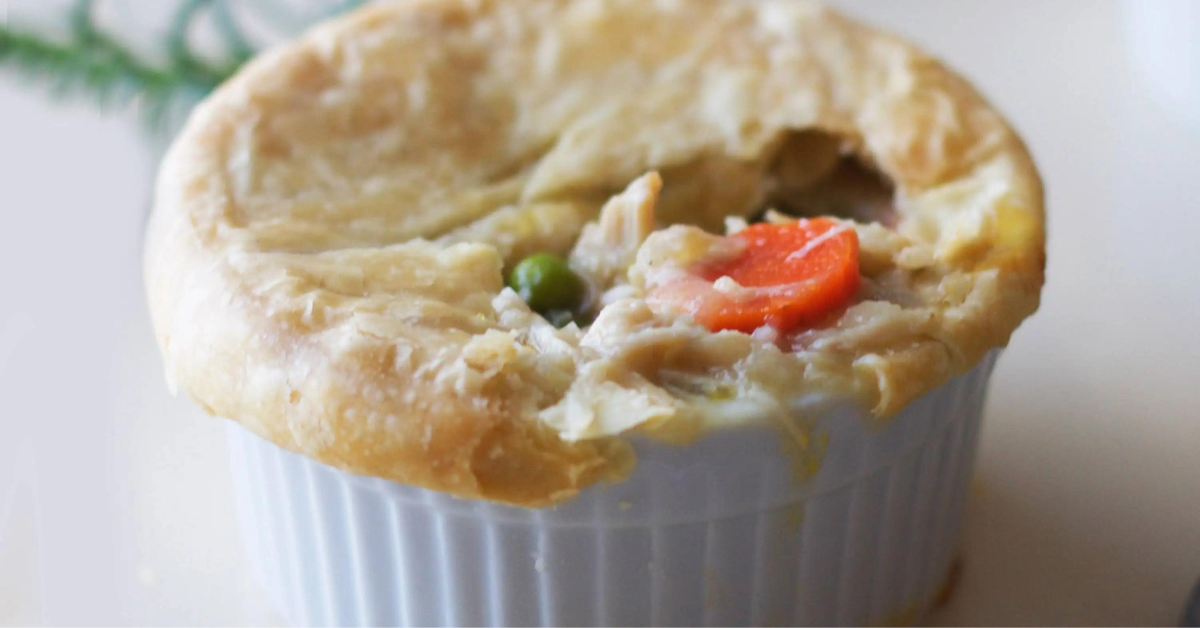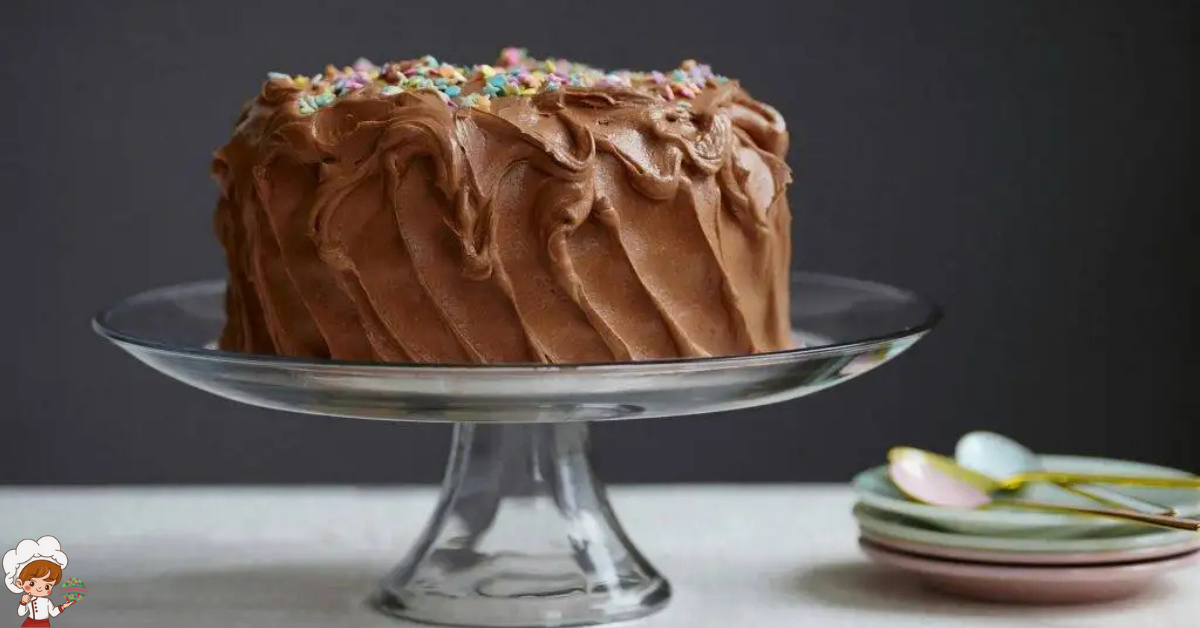Important Steps to Enjoy Baking With Children

Important Essential Steps to Enjoy Baking With Children
Do you know that baking with children can improve their math and reading skills? In this guide, you will discover the essential steps to enjoy baking with your little ones. By following these steps, you can create a fun and interactive experience that will not only teach them valuable life skills but also create lasting memories. From gathering the necessary ingredients to encouraging creativity in decorating, each step is designed to make the process enjoyable for both you and your children. So, set up a child-friendly workspace, teach them kitchen safety rules, and let them take the lead in measuring and mixing. Together, you can create delicious treats and bond over the joy of baking.
Gather the Necessary Ingredients
To begin baking with children, start by gathering all the necessary ingredients. When it comes to age-appropriate recipes, it’s important to choose ones that are simple and easy to follow. Look for recipes that involve basic ingredients like flour, sugar, eggs, and butter. Avoid complex recipes that require specialized equipment or ingredients that may not be readily available in your kitchen.
Before you start gathering the ingredients, make sure to teach your children about kitchen safety. Show them how to properly handle knives, hot stovetops, and electrical appliances. Emphasize the importance of washing hands before and after handling food to prevent the spread of germs.
Once you have all the ingredients ready, involve your children in the process of measuring and mixing. This will not only help them develop essential math and motor skills, but it will also make them feel involved and excited about the baking experience. Let them take turns adding ingredients and mixing the batter. Encourage them to ask questions and explore different textures and smells.
Remember to be patient and give your children space to learn and make mistakes. Baking with children is a great opportunity to bond and create lasting memories. So, embrace the messiness and enjoy the process together. By following these simple steps, you can create a safe and enjoyable baking experience for you and your little ones.
Set up a Child-Friendly Workspace
Create a child-friendly workspace by organizing and arranging all the necessary tools and materials. When baking with children, it’s important to set up a workspace that is safe, accessible, and engaging. Here are four essential steps to help you create a child-friendly baking area:
- Use child-friendly utensils: Invest in utensils specifically designed for little hands. Child-sized measuring cups, spoons, and mixing bowls will make it easier for your child to participate and enjoy the baking process. Look for utensils with bright colors or fun patterns to make them even more appealing.
- Arrange ingredients in an organized manner: Before you start baking, gather all the ingredients you’ll need and arrange them in an organized manner. Place them within easy reach of your child, so they can independently access and measure each ingredient. This will not only help them develop their fine motor skills but also instill a sense of responsibility and independence.
- Create engaging activities: Baking with children is not just about the end result; it’s about the experience. Incorporate engaging activities to keep your child entertained and excited throughout the baking process. For example, you can let them decorate cookies with colorful sprinkles or create their own unique design on a cake. These activities will not only make baking more enjoyable but also foster creativity and imagination.
- Ensure a safe environment: Safety should always be a top priority when baking with children. Make sure your workspace is free from any hazards or potentially dangerous items. Keep knives, hot pans, and electrical appliances out of reach. Teach your child about the importance of washing hands before and after handling food to maintain hygiene.
Choose Age-Appropriate Recipes
Now that you have set up a child-friendly workspace, it’s time to choose age-appropriate recipes for your baking adventure. When selecting recipes, consider the complexity of the recipe and the safety precautions involved. Opt for recipes that are simple and straightforward, allowing your child to actively participate and enjoy the process. This will not only keep them engaged but also encourage their independence and creativity in the kitchen.
Recipe Complexity and Safety
You should always choose age-appropriate recipes when baking with children. Not only does this ensure their safety, but it also allows them to fully participate and enjoy the experience. Here are four reasons why recipe complexity and safety are important when baking with children:
- Safety: Complex recipes may involve the use of sharp objects, hot appliances, or ingredients that can cause allergic reactions. Opting for simpler recipes reduces the risk of accidents and ensures the children’s well-being.
- Skill level: Children have varying levels of baking skills depending on their age and experience. Choosing recipes that match their abilities allows them to actively participate and contribute to the baking process.
- Attention span: Younger children may have shorter attention spans, making it difficult for them to follow complex recipes. Simple recipes with fewer steps and shorter baking times will keep them engaged and excited.
- Success and confidence: Completing a recipe successfully boosts children’s confidence and encourages them to continue exploring the joy of baking. Age-appropriate recipes allow them to experience the satisfaction of creating something delicious without feeling overwhelmed.
Encouraging Independence and Creativity
Choosing age-appropriate recipes is essential for encouraging independence and creativity when baking with children. By selecting recipes that match their skills and abilities, you can empower them to take charge in the kitchen and foster their imagination. Start with simple tasks like measuring ingredients or stirring the batter. As they gain confidence, gradually introduce more complex recipes that allow them to explore new techniques and flavors.
This not only promotes their independence but also sparks their creativity as they experiment with different ingredients and decorations. Consider recipes that involve assembling individual components, such as decorating cupcakes or assembling sandwiches. These activities provide opportunities for children to make choices and express their own unique style. Remember, the key is to provide guidance while allowing them the freedom to explore and create.
Teach Kitchen Safety Rules
Now that you’ve chosen age-appropriate recipes, it’s important to teach your children kitchen safety rules to prevent any accidents. Safety should always be a top priority when baking with kids, and by instilling these rules from the start, you can create a safe and enjoyable baking experience. In this section, we will discuss the importance of kitchen safety and provide practical tips to ensure a hazard-free environment.
Preventing Kitchen Accidents
To ensure a safe baking experience, it is crucial to teach children kitchen safety rules. By following these kitchen safety tips and childproofing the kitchen, you can prevent accidents and make baking a fun and enjoyable activity for everyone involved.
- Supervise: Always supervise children in the kitchen, especially when using sharp objects or hot appliances.
- Safe handling: Teach children how to properly handle knives, scissors, and other kitchen tools to avoid cuts and injuries.
- Heat safety: Teach children to be cautious around hot surfaces, such as stovetops and ovens, and to use oven mitts when handling hot pans or trays.
- Clean as you go: Encourage children to clean up spills immediately to prevent slips and falls.
Importance of Safety
To ensure a safe and enjoyable baking experience with children, it is vital to teach them the importance of kitchen safety rules. Safety precautions are essential to prevent accidents and injuries while working in the kitchen. Start by teaching your children to always wash their hands before handling any ingredients or equipment. Show them how to properly use knives and other sharp tools, emphasizing the importance of keeping fingers away from the blades.
Teach them to use oven mitts or pot holders when handling hot pans or dishes. Additionally, stress the importance of never leaving the kitchen unattended while the oven or stove is in use. Constant supervision is crucial to ensure that children are following the safety rules and guidelines. By instilling these safety habits early on, you can create a positive and secure environment for baking with your children.
Encourage Creativity in Decorating
Let your children unleash their artistic flair by encouraging their creativity in decorating baked goods. Decorating is a fun and exciting part of baking with children, and it allows them to express themselves in a unique way. By promoting imagination and encouraging experimentation, you can help your little ones create beautiful and delicious treats. Here are four ways to encourage creativity in decorating:
- Provide a variety of decorations: Stock up on different types of sprinkles, colored icing, edible glitter, and other decorative items. Offering a wide range of choices will spark your children’s imagination and allow them to experiment with different designs and combinations.
- Let them take the lead: Instead of dictating how the decorations should look, let your children take the lead in their decorating process. Encourage them to come up with their own ideas and designs, and give them the freedom to express their creativity. This will boost their confidence and make the experience more enjoyable for them.
- Use different tools: Introduce your children to different decorating tools such as piping bags, spatulas, and cookie cutters. These tools can add texture and dimension to their creations, allowing them to explore different techniques and styles.
- Display their masterpieces: Once the baking and decorating are done, make sure to display your children’s masterpieces proudly. Whether it’s on a special dessert table or in the kitchen, showcasing their creations will make them feel proud of their work and encourage them to continue exploring their creativity in the future.
Encouraging creativity in decorating not only enhances the baking experience but also nurtures your children’s artistic skills. By providing them with the tools, materials, and freedom to experiment, you are fostering their imagination and allowing them to develop their own unique decorating style. So, let your children’s creativity shine as they turn simple baked goods into works of art!
Let Them Take the Lead in Measuring and Mixing
Allow your children to be in charge of measuring and mixing ingredients for a hands-on baking experience. Encouraging teamwork and building confidence are two essential benefits of letting your little ones take the lead in this aspect of baking. Not only will they feel a sense of ownership and accomplishment, but they will also learn valuable skills that will serve them well in the future.
When you give your children the responsibility of measuring and mixing, you are fostering a sense of teamwork. By working together, you are teaching your children the importance of cooperation and collaboration. They will learn how to communicate effectively, divide tasks, and support one another in achieving a common goal. This experience will strengthen their bond as siblings or friends and teach them the value of working together as a team.
Moreover, letting your children take charge of measuring and mixing ingredients will boost their confidence. As they successfully complete each step, they will gain a sense of achievement and pride. By allowing them to make decisions and take ownership of the process, you are showing them that you trust their abilities. This trust will empower them to try new things, take risks, and develop their problem-solving skills.
It is important to guide your children through the process, offering assistance when needed. However, resist the urge to take over or correct their every move. Instead, let them explore and make mistakes. These mistakes will become valuable learning opportunities and teach them resilience and adaptability.
Make It a Fun and Interactive Experience
As you engage in baking with your children, ensure that the experience is fun and interactive by incorporating playful activities and opportunities for creativity. Making it a memorable bonding time will not only teach them essential baking skills but also create lasting memories. Here are four engaging activities to make baking with your children a truly enjoyable experience:
- Decorating Fun: After baking the cookies or cupcakes, set up a decorating station with colorful frostings, sprinkles, and edible decorations. Let your children unleash their creativity by decorating their own sweet creations. Encourage them to try different designs or create their own unique masterpieces. This activity not only enhances their artistic skills but also adds a personal touch to their baked goods.
- Shape Shifting: Use cookie cutters in various shapes like animals, flowers, or letters to make the baking process more interactive. Let your children choose their favorite shapes and assist them in cutting out the dough or shaping it into their desired forms. This activity encourages imaginative play and allows them to take pride in their creations.
- Storytelling Time: Baking can be a perfect opportunity to weave stories and engage your children’s imagination. Create a story around the ingredients, the recipe, or the final product. Encourage them to add their own twists and turns to the tale. This activity not only enhances their storytelling skills but also adds an element of excitement to the baking process.
- Taste Testing Adventure: Make taste testing a fun and interactive experience. Encourage your children to use their senses to explore the flavors, textures, and aromas of the ingredients. Let them describe what they taste and how it makes them feel. This activity not only develops their sensory awareness but also helps them appreciate the different elements that go into baking.
Enjoy the Delicious Results Together
After you and your children have finished baking and decorating, it’s time to savor the delicious results together. The best part of baking with your little ones is enjoying the fruits of your labor. As you sit down to taste the treats you’ve created, take a moment to appreciate the effort and creativity that went into making them. Baking is not just about the final product, but also about the process and the memories you’ve made together.
As you take that first bite, encourage your children to share their thoughts and feelings about the baked goods. Ask them what they enjoyed most about the experience and what they would do differently next time. This not only helps them develop their communication skills but also allows them to reflect on the process and learn from it. It’s a great opportunity for bonding and showing appreciation for each other’s efforts.
While enjoying the delicious results, take this time to reinforce the lessons learned during the baking session. Talk about the importance of following instructions, measuring ingredients accurately, and being patient. Discuss the different flavors, textures, and aromas you can taste. This helps your children develop their sensory skills and expand their culinary knowledge.
Remember to involve your children in the clean-up process as well. It is important to teach them responsibility and the value of taking care of the kitchen after cooking. Working together to clean up can be another bonding experience and a chance to reflect on the fun you had while baking.
Frequently Asked Questions
Can I Substitute Any of the Ingredients in the Recipes?
You can definitely substitute ingredients in recipes to accommodate your preferences or dietary restrictions. Baking without certain ingredients can still be enjoyable and delicious. Just make sure to choose appropriate substitutes for the best results.
How Can I Involve My Child in the Clean-Up Process?
To involve your child in the clean-up process and teach responsibility, make it fun! Give them age-appropriate tasks like wiping counters or washing dishes. Praise their efforts and turn it into a game.
Are There Any Specific Safety Tips for Working With Sharp Objects in the Kitchen?
When working with sharp objects in the kitchen, it’s important to prioritize safety. Make sure to keep knives and other sharp tools out of reach of children. Consider using child-friendly tools to minimize the risk of accidents.
What Are Some Alternative Ideas for Decorating Baked Goods if We Don’t Have Icing or Sprinkles?
If you’re looking for creative substitutes for decorating ingredients, there are plenty of unique ways to make your baked goods visually appealing. Try using fresh fruit, edible flowers, chocolate shavings, or even powdered sugar for a simple and delicious touch.
How Can I Make Baking a Learning Experience for My Child?
To make baking a learning experience for your child, start by seeing it as a sensory adventure. Let them touch, smell, and taste the ingredients. Then, incorporate math skills by measuring and counting. It’s fun and educational!
Conclusion
So there you have it! Baking with children can be a wonderful and memorable experience for both kids and adults. By following these essential steps, you can create a child-friendly baking environment, teach valuable kitchen skills, and most importantly, have fun together. So gather your ingredients, set up your workspace, and let the baking adventure begin! Enjoy the delicious results and make lasting memories with your little ones. Happy baking!








